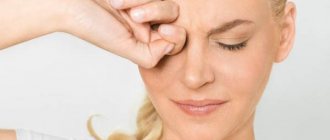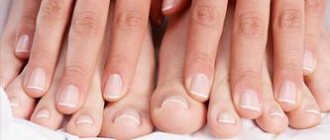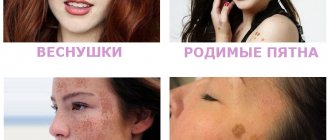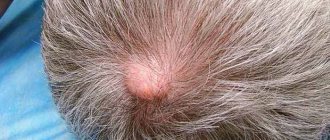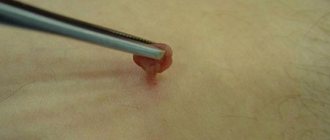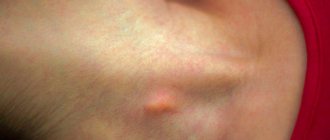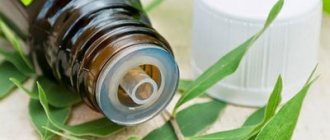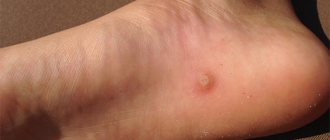Psoriasis is a chronic non-infectious skin disease characterized by the formation of inflammatory areas on the skin, causing itching, irritation and discomfort.
Inflammation of the scalp during psoriasis is often the initial stage of manifestation of more severe forms of psoriasis and affects the general physiological and psycho-emotional state of the patient. But knowing how to deal with this disease, you can prevent the serious consequences of this disease.
According to statistics, psoriasis develops in 1 person out of 100, while in 75-80% of patients this disease affects the scalp, and in the rest the lesions spread to the hands, interdigital spaces and external articular surfaces. Psoriasis on the scalp is more common in women - with the initial stage of development occurring at 15-30 years of age. Experts have also noted a certain risk of the disease if close relatives have the disease - they argue that the risk of transmitting this skin disease genetically is extremely high.
Why does the disease appear?
The causes of psoriasis on the head can be varied, ranging from depression and nervous disorders to metabolic disorders. Here are the main ones:
- Frequent and intense impacts on the scalp (woolen hats, rough use of hair combs, dandruff);
- Unsuitable hair care products;
- Allergic reactions to cosmetics;
- Depression;
- Emotional disorders and mood swings;
- Unbalanced diet;
- Hormonal imbalances;
- Genetic predisposition.
Alternative Methods
How to cure psoriasis on the scalp without resorting to medications? You can also go to a medical facility for therapy. will have a good effect .
The method involves short-term irradiation of the affected area with ultraviolet radiation.
In addition, you can resort to irradiation with an erbium laser, the effect of which is aimed at stimulating the blood and lymph systems.
In turn, this contributes to more effective drug therapy. All treatment methods do not interfere with the hormonal system and are safe. Diet is also a very important point. To treat scalp psoriasis as effectively as possible, you need to avoid eating foods that contain large amounts of sugar, salt, and hot spices.
Normalize your intake of carbohydrates and fats. You should consume more plant and dairy products. In addition, introducing flaxseed oil, fish oil and vitamin A into the diet will significantly speed up the treatment process. So, this is the most complete answer to the question: “how to treat psoriasis on the head and what remedies are suitable for this?”
Stages of scalp psoriasis
Psoriasis on the scalp can occur in 4 stages:
- The initial stage is the stage in which plaques form and itching begins;
- The progressive stage is the stage in which the resulting plaques spread over a certain area, in our case, over the scalp, necrosis of skin cells occurs, itching and flaking intensify, and a complete failure occurs in the process of cell regeneration;
- Stationary stage - the stage at which all affected areas of the skin stop growing, moderate peeling occurs - the stratum corneum becomes folded, which indicates the transition of the disease to the fourth stage;
- The fourth stage is the regression stage. During this period of the disease, the formation of plaques decreases, and pigmentation appears in their place.
If you suspect psoriasis on the scalp, it is very important to consult a specialist in time in order to reliably differentiate the disease, as well as prescribe an appropriate course of treatment.
The course of psoriasis on the head does not cause any suspicion at the very beginning. Itching begins and the patient thinks it is dandruff. What actually happens is this. Plaques begin to form on the affected areas of the scalp, which quickly become limited and rise on the skin, as a result of which the inflammatory process begins. The patient is worried about severe itching, infrequent and slight increases in body temperature, and a general depressed state. In some cases, plaques can spread from the scalp to the nasolabial folds, behind the ear, and face.
With psoriasis of the scalp, even with an acute inflammatory process, hair loss does not occur, which makes it possible to differentiate this disease from other diseases of the same origin.
Treatment of psoriasis on the head must be comprehensive, including specific medications, psycho-emotional relief and folk remedies.
Effective treatment
Therapeutic measures aimed at getting rid of psoriasis are characterized by complexity, involving both external and internal effects on the disease. The main remedies for psoriasis on the head are:
Medications
In the presence of moderate or severe forms of the disease, psoriasis is treated with medication:
- Reamberin . Presented in the form of a solution intended for drip administration. Due to the antihypoxic and restorative effect, the main effect is aimed at relieving signs of intoxication. The main component of the drug is succinic acid, known for its antioxidant properties, as well as the ability to saturate cells with oxygen.
- Methotrexate . The medicine is used only if it is necessary to cure severe forms of the disease. The action is aimed at slowing down the process of cell division. Administration is carried out intravenously or orally. Due to the presence of a large number of adverse reactions, the drug is used only after medical consultation.
- Diprospan . Belongs to the group of hormonal drugs. Due to many contraindications, it is prescribed for severe forms of psoriasis.
Physiotherapy
Physiotherapy has proven itself in the treatment of pilaris psoriasis. Today, the most proven and highly effective methods of physiotherapy are:
a) Phototherapy
It is a method of suppressing the signs of psoriasis using ultraviolet rays. PUVA therapy, which involves exposure to ultraviolet radiation, has proven itself most positively. Irradiation is carried out after taking a photosensitizer, a drug that increases the sensitivity of the skin to light. After taking it, it becomes possible for ultraviolet radiation to penetrate into the deep layers of the skin, which makes it possible to effectively treat the disease.
b) Cryotherapy
The method is characterized by short-term exposure to cold on the affected skin areas of the head. The essence of the procedure is as follows:
- the patient is placed in a special device that looks like a chamber and is called a cryosauna;
- Cold gas with a temperature of up to -130 degrees is introduced into the chamber. The result is instant cooling of the skin, as well as stimulation of natural protective processes;
- The patient remains in this position for a couple of minutes.
The effect of cryotherapy is achieved after completing a full course of 30 sessions. Up to 4 procedures can be performed daily to help eliminate itching, pain, and inflammation.
c) Laser therapy
In this case, a laser is used. Its advantage lies in its therapeutic effect on affected areas of the skin without affecting healthy areas. The procedures are painless and harmless: this is manifested in the absence of scars and subsequent pigmentation after treatment.
Creams and ointments
To get rid of psoriasis using local medications, it is advisable to use:
a) Creams
The following compositions have proven themselves well:
- Picladol . The high effectiveness of the cream is achieved only with complex treatment of the disease. It has a strong anti-inflammatory and softening effect. Promotes rapid regeneration of the skin. The remedy is used until the regressing stage of the disease.
- Tsinocap . The main component, zinc pyrithione, has an antibacterial effect, causing the death of bacteria.
- Psoril . It is distinguished by a rich herbal composition with a rich content of vitamins, thanks to which the scalp is disinfected. It also has a wound-healing and antifungal effect.
Also on the topic: Treatment of psoriasis with folk remedies
b) Ointments
Experts recommend using:
- Naftaderm . The ointment is known to effectively suppress itchy sensations on the scalp. It is characterized by regenerating, analgesic, antiseptic and anti-inflammatory effects. The main component is naftalan oil, which gives the preparation a pronounced oil smell. The method of application is to lightly apply the ointment to the skin under the hair without rubbing. The treatment course is 5 weeks.
- Salicylic ointment. The basis of the drug is the acid of the same name, characterized by the absence of provoking adverse reactions.
- Daivonex . The ointment has a viscous consistency of a transparent color. The main substance is calcipotriol, which is a synthetic analogue of vitamin D.
A large list of medicinal ointments is in our review “Ointments for Psoriasis”.
Lotions
Various lotions are also effective against psoriasis:
- Belosalik . Belongs to a group of hormonal agents, which includes betamethasone and salicylic acid. In combination with each other, these substances have anti-inflammatory, antihistamine, antiseptic effects, accompanied by the relief of itching sensations. The ease of applying the lotion is due to the presence of a special nozzle for spraying the affected areas of the head.
- Diprosalik . Has a similar composition. Using a sprayer, apply with light rubbing. Effective for relieving symptoms and inflammation.
- Calamine . The medicine has a natural composition containing zinc and calamine. The result is an anti-inflammatory and cooling effect.
Detailed review of “Lotions for Psoriasis”.
Shampoos
Shampoos for the treatment of psoriasis on the scalp and hair are divided into several categories:
a) Tar
The compositions necessarily contain tar from birch, willow and coniferous trees in the form of pine and juniper. These components contribute to:
- removal of excess sebaceous manifestations;
- skin cleansing of dead cells;
- washing off ointments with a greasy consistency;
- relieving inflammation and itching;
- suppression of the growth of fungal microorganisms.
The most effective shampoos: “Friderm Tar”, “Psorilom”, “Algopix”. They have a sedative effect, coping with itchy sensations on the skin.
b) Antifungal
A powerful antifungal effect is achieved by increasing the itching sensation at the beginning of using shampoos. The active substance of this group is ketoconazole. Nizoral is considered the most effective antifungal shampoo:
- sanitizes fungal lesions;
- soothes the skin;
- heals affected areas.
The shampoo is suitable to fight all types of fungal infections of the scalp.
c) Medicinal
The medicinal category of shampoos is characterized by the presence of:
- salicylic acid;
- urea;
- ichthyol;
- zinc and others.
They have a pronounced antibacterial and moisturizing effect. Medicinal shampoos are presented in a large assortment. The most popular is “Skin Cap”, suitable for various types of fungal skin lesions. Skin Cap is also sold in aerosol form. Apply externally by spraying onto hair at a distance of 15 cm.
Compositions, prices, action and review of the most effective shampoos for psoriasis in a separate material.
Folk remedies
To remove the manifestations of psoriasis, traditional medicine recipes are often used. Let's pay attention to the most accessible ones for use at home:
Also on the topic: How to quickly relieve an exacerbation of psoriasis?
a) Oils:
- Essential . Commonly used essential essences are: ylang-ylang, oregano, myrrh, sandalwood, geranium. Sea buckthorn oil is no less effective in treating the disease. Has a calming effect, disinfecting and regenerating the skin.
- Linen . Flax seed oil helps relieve inflammation, relieve swelling, and promote rapid healing of affected areas of the head.
Head masks are made from the mentioned oils:
Recipe #1:
- burdock oil in the amount of a couple of spoons is mixed with 5 drops of ylang-ylang and chamomile;
- the mixture is heated and rubbed into the scalp;
- the mask is left for 40 minutes, after which it is washed off with shampoo.
A positive result is manifested in accelerated healing of the skin, improvement of the hair structure, and prevention of hair loss.
Recipe #2:
- a teaspoon of grape seed oil is mixed with a tablespoon of grapefruit pulp;
- add 10 drops of lemon essential essence;
- the oil mixture is rubbed into the affected areas and left for half an hour;
- After the required time has passed, the mask is washed off.
b) Tar soap
The particular popularity of this soap is due to the following properties:
- improved blood circulation;
- destruction of pathogenic bacteria;
- disinfection of affected areas;
- relieving painful and itchy sensations.
Tar soap can have a drying effect. This must be taken into account in patients with excessive dry scalp. You should also be prepared for the fact that the soap has a rather pungent odor.
c) Onion
Recipe for the treatment of psoriasis: chop the onion, wrap it in gauze and apply it to the affected areas of the skin for a few minutes. Afterwards, the entire head should be washed with cool water, and a medicinal ointment should be applied to the location of the plaques.
More good recipes in the article “Treatment of psoriasis with folk remedies.”
Diet
One of the main causes of psoriasis is allergic reactions. During the treatment period, it is important to adhere to a certain diet:
- exclusion of alcoholic beverages from the diet;
- the presence of fractional nutrition, which involves eating in small portions and taking a break of three hours;
- minimizing salt intake;
- refusal of smoked meats and pickles;
- exclusion from the diet of artificial additives in the form of dyes and preservatives;
- frequent consumption of fresh vegetable and fruit products;
- daily consumption of fermented milk products.
Read more about proper nutrition in the section “Diet for psoriasis.”
Psoriasis of the scalp before and after treatment
Treatment of psoriasis on the head and its features
An important feature of cephalic psoriasis is its obvious clinical severity, which affects not only the general condition of the body, but also the psycho-emotional state. This can lead to severe depression and aggravate depression, which subsequently leads to an immediate deterioration in the patient’s condition and, accordingly, in the clinical manifestations of the disease.
The famous British politician Winston Churchill himself suffered from psoriasis on his head during his lifetime. To quickly find a cure for this disease, he promised to erect a gold monument to the one who will find the most effective medicine that will cope with the disease once and for all. But, alas, there is still no monument, and dermatological scientists are still searching for this magical drug.
Scalp care and treatment
Before starting therapy, it is advisable to cut your hair short. This is due to the fact that long curls make it difficult for medications to penetrate. In addition, during the treatment period, you should refrain from using a hair dryer, curling iron, straighteners, or curlers. It is advisable to avoid combs made from artificial materials. It is better to give preference to brushes made of wood and those with natural bristles.
The period of therapy for this disease can take either a month or a longer period. This indicator is strictly individual, and also depends on the state of the patient’s immune system and his overall health, as well as on his attitude to treatment. It is advisable to carry it out regularly, following the instructions. It is also necessary to follow the recommendations of a specialist.
Do not be afraid if you are caught by this unpleasant illness. Remember that properly selected therapy and a good mood are the key to a quick recovery!
Preventive measures for scalp psoriasis
If you are predisposed to psoriasis of the scalp or are in its initial stages, you should adhere to the following rules:
- Use combs made of natural materials;
- Comb your hair without damaging the scalp, carefully and gently;
- Carefully study the composition of shampoos to prevent the occurrence of an allergic reaction, pay attention to the expiration date of products;
- Avoid using electrical appliances for drying and styling hair;
- Create a diet that is dominated by healthy foods and fiber;
- To refuse from bad habits;
- Increase physical activity;
- Try to avoid conflict situations;
- Do not fall into a state of depression, and if it occurs, consult a specialist;
- Take complex vitamin preparations;
- Find something you like - a favorite hobby will allow you to relax and avoid stress.
All these rules will partially help prevent the occurrence of a disease such as psoriasis of the scalp.
Psoriasis of the scalp is one of the most depressing forms of the disease due to its clinical signs. About 90% of patients, as the disease progresses, withdraw into themselves and become depressed because of their appearance. Therefore, in order not to reach such a state, it is worth systematically visiting specialists. Modern medications may not rid you of psoriasis forever, but they will help delay the onset of the next wave of clinical manifestations.
Shampoo for psoriasis of the scalp
Shampoos for psoriasis on the scalp are selected individually, but there are some types that can treat different degrees of the disease. Shampoos with zinc have a drying effect, eliminate itching and reduce inflammation. Drying psoriatic plaques allows you to save hair. Such shampoos may have fragrances; their use is not much different from ordinary mass-market shampoos.
Tar shampoos or tar soap are aimed at the general strengthening effect of the hair follicles, as well as eliminating inflammation at the site of the plaque. Soap is more harsh; it may not be suitable for owners of long hair, as it slightly dries out the length of the hair. Shampoos are usually mild and easy to use. Most often, women choose shampoos instead of soap.
Nizoral shampoo. It is used for seborrheic dermatitis, pityriasis versicolor, and other diseases. During psoriasis, Nizoral is often prescribed by doctors for complex therapy.
Diagnostics
It is necessary to treat psoriasis on the head, but first, when the first symptoms appear, you should make sure that it is really psoriasis and not ringworm, seborrhea or any other dermatological disease.
Diagnostic methods:
- Anamnesis collection.
- Visual inspection.
- Examination of scales from the head under a microscope.
- Biopsy and histological examination of biomaterial from the head.
- Psoriatic triad (stearic spots, terminal film, Auspitz sign).
- General blood analysis.
- Estimation of erythrocyte sedimentation rate.
- Rheumatoid factor.
Basics of therapy
There is no clear recommendation on how to properly treat psoriasis.
Modern medicinal methods are generally aimed at alleviating the patient’s condition during an exacerbation, maximizing inhibition of pathological cell growth, reducing the inflammatory process and preventing complications.
The course of treatment is selected by the doctor individually, based on anamnestic data: the degree and type of disease, the area of the body affected, the gender and age of the patient, concomitant diseases, and features of external conditions.
Based on considerations of expediency, certain ointments and medications are prescribed in strictly individual dosages and combinations.
The treatment method is based on the following principles:
1. Topical preparations are used for initial, mild and moderate forms of psoriasis. In case of severe inflammation of the plaques, a weekly course of treatment with hormonal ointments is first recommended: this helps reduce the aggression of the immune system and makes it possible to normalize the regenerative work in the upper layers of the skin. The duration of use of steroids is limited (to avoid the risk of side effects), and after their expiration they should be treated with dermatological creams and lotions based on zinc and salicylic acid.
2. Physiotherapeutic methods are used along with local treatment, and phototherapy shows good results. Exposure of the skin to ultraviolet rays of a certain wavelength delays intensive cell division even in the deep layers of the dermis and enhances regeneration. Phototherapy has virtually no contraindications and is a priority method in the treatment of psoriasis on the body and head during pregnancy.
3. Systemic drugs are the heaviest artillery that is used in cases of low success rates of the above methods and generalized forms of psoriasis. The main weapon of war is the use of cytostatics - drugs that stop cell growth. Along with them, immunosuppressants are prescribed - medications that suppress the immune response and reduce inflammation. These are medications that have serious side effects, so they are prescribed with extreme caution. Therapy is carried out in a hospital setting
4. Vitamin therapy is recommended as an adjuvant: preparations of local and systemic properties containing vitamins A, E, D. But their prescription must be strictly justified, since excess content in the body leads to serious consequences: liver damage, allergic reaction, renal failure , a critical decrease in potassium in the blood.
Types of psoriasis
The disease is divided into two large groups: pustular and non-pustular psoriasis.
Nonpustular psoriasis
- ordinary (vulgar) or simple psoriasis (plaque psoriasis, chronic stable psoriasis)
- psoriatic erythroderma or erythrodermic psoriasis
Pustular psoriasis
- von Zumbusch pustular psoriasis or generalized pustular psoriasis
- palmoplantar psoriasis (pustular psoriasis of the extremities, chronic persistent palmoplantar pustulosis)
- annular pustular psoriasis
- palmoplantar psoriasis
- psoriatic impetigo herpetiformis
Additionally, these types of psoriasis are distinguished. According to the degree of severity, these forms of psoriasis are distinguished:
- Mild – less than 3% of the skin is affected.
- Moderate severity - 3-10% of the skin is covered with psoriatic plaques.
- Severe – there is damage to the joints or more than 10% of the skin is involved.
Lichen planus can appear in different forms and on different parts of the body.
It can be of the following types:
- ordinary (plaque-shaped);
- pustular;
- drop-shaped;
- psoriasis of the limbs on the folds;
- scaly nail lichen;
Plaque-like
It is the most common, it can be found in almost 90% of all patients with this disease. It is characterized by psoriatic plaques, on top of which there is thick skin with a grayish tint, which is easy to remove. And underneath there is redness, which is highly susceptible to various factors, trauma, infection, bleeding often occurs there, since there are many vessels here.
Psoriatic plaques can change size and merge with neighboring ones, thus, entire psoriatic plates can form, or as they are also called Paraffin lakes.
Pustular
It is one of the most severe forms of this disease. In this case, you can observe bubbles or blisters in the affected areas, inside of which there is a clear liquid, it is not infectious in itself, but causes inflammatory processes, the skin around the blisters is inflamed, red, hot and with signs of swelling.
Although the fluid in the blisters is not infected, the affected areas are susceptible to secondary infections, in which case the fluid (pustules) becomes purulent.
The pustular form of psoriasis can manifest itself both limited and localized. But most often it occurs in the area of the forearms and legs, in which case it is called palmoplantar pustulosis. But sometimes, pustular squamosal can affect the entire body, and the pustules merge into larger ones.
teardrop-shaped
It appears, as the name implies, in the form of formations in the form of drops or dots. This type of lichen planus tends to affect large areas of the skin. Usually, the lesion occurs in the hips, but it can also be the back, head, forearms, legs, neck and some other parts of the body. The development of the disease occurs most often after streptococcal sore throat or pharyngitis.
On the folds
This could be the armpits, folds under the abdomen in case of obesity, in the genital area and other places where there are folds. The disease may be worsened by exposure to sweat, streptococcal infections, or friction.
Scaly
It happens not only on the skin, but also on the nail. In this case, it can manifest itself in different ways.
Nails become dull yellow or other shades. The skin under the nails may become thicker, and the nails themselves may become brittle, breakable, or pitted, and sometimes you may lose your nails completely.
The external manifestation of psoriasis depends entirely on the type of disease. Experts identify several types of the disease that affects the patient’s skin. The type of psoriasis that appears on the body can be diagnosed by photographing the affected areas.
- Ordinary psoriasis. It is also called plaque or vulgar. This form of the disease is the most common. It manifests itself as redness and inflammation of the skin. The area is characterized by increased temperature, peeling, and raised above healthy skin. In most cases, the plaque is covered with gray or silvery dried skin. She is easily injured. It peels off under mechanical stress. Drops of blood appear at the site of injury. If left untreated, plaques grow in size, connecting with neighboring formations and forming entire layers.
- Pustular psoriasis. This form of the disease can appear instantly. Occupies large areas on the patient's body. Most often it appears in the form of bubbles filled with liquid. This disease is accompanied by symptoms of intoxication of the body: headache, weakness, nausea.
- Guttate psoriasis. Speaking about how this form of the disease manifests itself, we should mention small dry drops of purple or red color. They rise above healthy skin. In some cases the color may be purple. Psoriasis affects most of the patient's skin. Most often, this form of the disease appears after infection with streptococcus.
In addition to the listed types, there are varieties of the disease that affect the nail plates, soles of the feet and palms. Apart from the types, the way psoriasis looks depends on its severity.
- Light form. Characterized by damage to 3% of the skin.
- Medium shape. In this case, from 3 to 10% of human skin is affected.
- Severe form. In her case, more than 10% of the skin is affected. A severe form of the disease includes psoriatic joint damage.
Puva therapy
One of the methods of treating this disease is PUVA therapy. This is a physiotherapeutic method aimed at irradiating the skin with special waves. The method is quite effective and is often used in spa treatment.
Not only psoriasis is treated with this method, but also other skin diseases. In the case of regular course treatment, positive dynamics and often complete recovery of the person are observed. When using complex treatment, improvement occurs within 15 procedures.
Spa treatment
Many sanatoriums in Russia and other countries of the world accept psoriasis patients. After treatment in such places, a person receives significant relief from the course of the disease, as well as relief from unpleasant symptoms.
Sanatoriums mainly offer mud therapy and balneotherapy. The course of procedures is about 30 times. Mud therapy is aimed at eliminating itching and inflammation at the site of the disease.
In addition, a hydrogen sulfide bath and bathing in similar sources are often prescribed. Sanatoriums offering such treatment are located in Crimea, Pyatigorsk, Sochi. People who undergo a course of treatment in sanatoriums receive long-term remission.
Causes of exacerbation of psoriasis
Symptomatic manifestations of the disease are characterized by severity and wave-like character. Obvious symptoms of the disease are:
- formation of plaque-like structures on the epidermis;
- hyperemia of lesions;
- dryness and flaking;
- periodic hemorrhages;
- pronounced scratching sensation;
- the appearance of oozing spots on the epithelium;
- formation of excaudate.
It is impossible to cure psoriatic rashes without eliminating the factors that provoke the progression of the pathology. The causes of psoriatic rashes are:
- bad habits;
- overwork;
- nervous tension;
- unbalanced diet;
- hormonal surges.
Relapses of the disease are observed due to the influence of many causes on the human body:
- chronic course of an infectious inflammatory process;
- HIV infection;
- mechanical or chemical trauma.
The disease psoriasis is not transmitted by contact, however, symptomatic manifestations in patients with psoriasis force them to avoid others. Therefore, it is necessary to quickly get rid of such pathology as psoriasis. You can get rid of stains using topical medications. Psoriasis can only be cured with complex therapy.
How skin diseases and liver condition are interconnected, how to cleanse the body with psoriasis. Read important warnings on how to prolong remission in our article - we treat and cleanse the liver for psoriasis.
What is the best spray for psoriasis? The solution is in our article - a spray for psoriasis.
Read how to take folic acid for psoriasis, the reasons for vitamin B9 deficiency here - folic acid for psoriasis.
Traditional methods of therapy
It is not possible to get rid of psoriasis forever using traditional methods. But it will be possible to reduce the severity of symptoms with the least negative impact on the body. However, home therapy methods should be included in the treatment of dermatological diseases. It is possible to cure psoriasis at home using folk remedies:
- based on solid oil;
- soda;
- ointment based on aloe and propolis;
- baths with the addition of licorice;
- activated carbon;
- celandine herbs.
These treatment methods are applicable for mild stages of the pathology. With generalized progression of the disease, traditional medicine can be part of the therapy.
Solid oil based product
Medical solidol is one of the effective methods for getting rid of psoriasis. It has a whole range of positive effects on psoriatic lesions:
- relieves inflammation;
- softens the surface of the epidermis;
- promotes exfoliation.
You can use the medicine either in its pure form or include this ingredient in homemade ointments.
Treatment of psoriasis with soda
Compresses against psoriasis are prepared from soda or added to baths. A compress is prepared in warm water, dissolving a spoonful of soda in a glass, soaking a towel or gauze in the solution and applying it to the lesion. Approximately 100 g of the ingredient per 1 liter of water is added to the baths. Exposure should not exceed 15 minutes. The water temperature cannot exceed 39 degrees.
Ointment based on aloe and propolis
To prepare a cream based on aloe and propolis, you need 100 g of propolis and 2 tbsp. l. aloe. Propolis is pre-crushed and boiled in a water bath. After softening the first ingredient, add aloe to the mixture and mix. After cooling, the medicine is applied to the lesions. The course of treatment ranges from 10 to 14 days.
Licorice for psoriasis
To get a cure for psoriasis, you need to boil licorice in a water bath. You need 2 tbsp. l. licorice pour 500 ml of boiling water. After infusion, the solution is boiled in a water bath for 25 minutes. The prepared broth must be filtered. For psoriatic pathology, take an average of ¼ cup of licorice before meals.
Activated carbon
The component helps eliminate toxins and activates metabolism. It is necessary to take the medicine taking into account the patient’s weight, 1 tablet per 40 kg of weight. The course consists of 30 days. Dermatological pathology can be cured using compresses based on activated carbon. To do this, you need to grind about 5 tablets of the medication into a powder. Dissolve the powder in a spoon of water and apply to the lesions. The resulting mixture must be applied to the lesions and leave the compress for 20 minutes.
Unclear etiology
Psoriasis is a disease that is chronic and does not have an infectious cause. Simply put, it is safely classified as a hereditary inflammatory skin disease. Despite the fact that this disease has long been known in medicine, it has not yet been possible to establish exactly where it originates. The most likely cause is considered to be autoimmune processes in the body.
loading…
Basically, psoriasis is classified as a dermatological disease, but advanced forms can affect the entire body as a whole, which requires the involvement of specialists from different medical fields in the treatment.
Psoriasis manifests itself in a very specific manner and, as a rule, detects its presence in the body during adolescence. It is then that the most severe restructuring of metabolic processes occurs, which gives rise to a hidden problem. Cosmetic defect and discomfort are not the main problem; in the acute stage, the disease tends to generalize and spread to internal organs.
I would like to draw special attention to the fact that psoriasis is not a contagious disease, but is inherited. If one of the parents has a history of this chronic disease, then the probability of transmission to the child is 50%; if both parents are carriers, then the risk increases to 75%. However, research on the genetic aspect of the disease and in general on the question of why psoriasis occurs on the body (link) is in an active stage of development.
